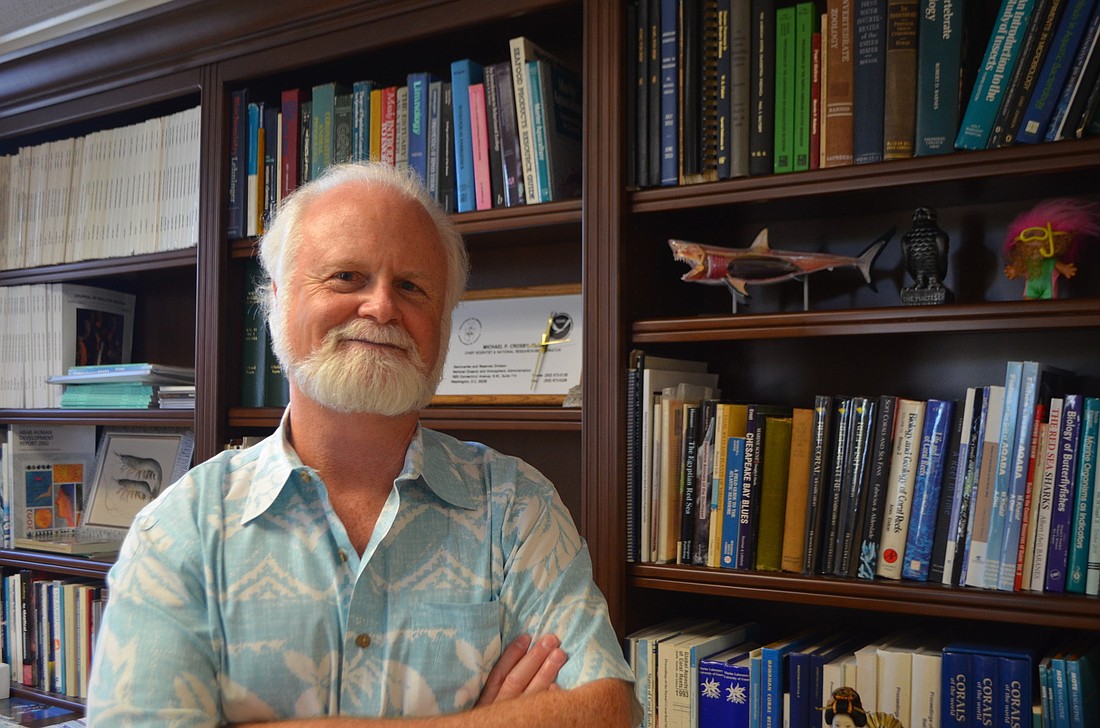- April 19, 2024
-
-
Loading

Loading

For Mote Marine Laboratory and Aquarium to achieve the level of growth prescribed by the organization’s strategic plan, its leaders have come to a realization: They’re going need a bigger facility.
In 2010, then-Senior Vice President for Research Michael Crosby helped craft a series of priorities and strategies centered on one goal: making Mote a nationally and internationally recognized marine research organization. The Mote Board of Directors approved the 2020 Vision and Strategic Plan in 2011, and officials began working to implement its ambitious blueprint for growth.
Three years later, Crosby — now the president and CEO of Mote — said little has changed regarding the organization’s goals since then. One significant path toward achieving those goals has crystallized, however. Rumors have swirled about a potential downtown aquarium, and Crosby confirms Mote intends to pursue such a facility on city-owned bayfront property near the Van Wezel.
“As we evolve this campus here (on City Island) into becoming this international science technology and innovation park, it’s become clear we need to move the more public face of Mote off of this campus,” Crosby said.
The conversation began internally as soon as the 2020 vision plan was penned, according to Mote Vice President Dan Bebak. Mote leaders took a deliberate, private approach to gauge the feasibility of a new mainland facility. Conversations with staff and public officials served as confirmation for Mote leaders that they were on the right path.
A 2013 feasibility study, conducted by zoo and aquarium management firm ConsultEcon, served as evidence the move could make fiscal sense. The projected differences between attendance, revenue and net income at a new City Island facility versus a downtown bayfront aquarium were significant: 136,000 more visitors every year and $3.7 million in additional annual revenue.
Mote leaders, confident that the new facility is the right step for the organization, are prepared to make their efforts more public. Bebak said officials have already had conversations with groups such as the Argus Foundation, and they intend to continue their public outreach going forward.
Crosby said that a majority of the funding for such a project would ideally come from the county, the state and corporate sponsors. Before that can happen, though — and before the organization works toward determining design specifics — it needs one big preliminary assurance from the city.
“We need the city to agree to this,” Crosby said. “For our leaders to say, ‘Yes, we see the vision; we realize this is good for our community in so many different ways.’”
Lab work
The idea of an aquarium may be more eye-popping, but Crosby said the growth plan is focused on Mote’s research facilities.
With the aquarium off-site, Mote could expand its laboratory work throughout its existing campus. As a result, Mote could better house its 33 Ph.D. scientists — a number it hopes to grow to 45 by 2020.
Established just in the past four years, Mote’s post-doctoral fellowship program allows scientists to pursue passion projects for two years. It’s an area of growth of which Crosby said he’s proud.
“This Mote post-doctorate fellowship is about bringing in the next generations of (Mote founder Eugenie) Clarks, of scientists,” Crosby said.
As Mote begins to evolve, Crosby is still intent on honoring its nearly 60-year-old history — including traditions that date to Clark’s 1955 opening of the laboratory.
In 1954, the Vanderbilt family approached Clark about starting a marine research laboratory in the area and invited her to serve as its director.
There were no strings, contracts or promises attached — just a request that Clark create something similar to the small isolated Egyptian marine biology laboratory she described in her book, “Lady With A Spear.” Today, Mote still eschews contracts in favor of handshake deals and the ability for researchers to explore areas of their choosing.
“Genie came here with passion for her science, but she was given the freedom to follow her science because of the support she had philanthropically and the partnerships with the community,” Crosby said.
Still, Crosby is largely looking forward. He plans to go to the city this fall to seek a commitment regarding the use of bayfront land for a new aquarium.
If approved, he believes the expanded Mote can be a valuable asset for the city and region, economically and environmentally.
“This is our community; we’re part of it,” Crosby said. “We need the city to demonstrate their support by standing up and being with us and saying we share this vision.”
